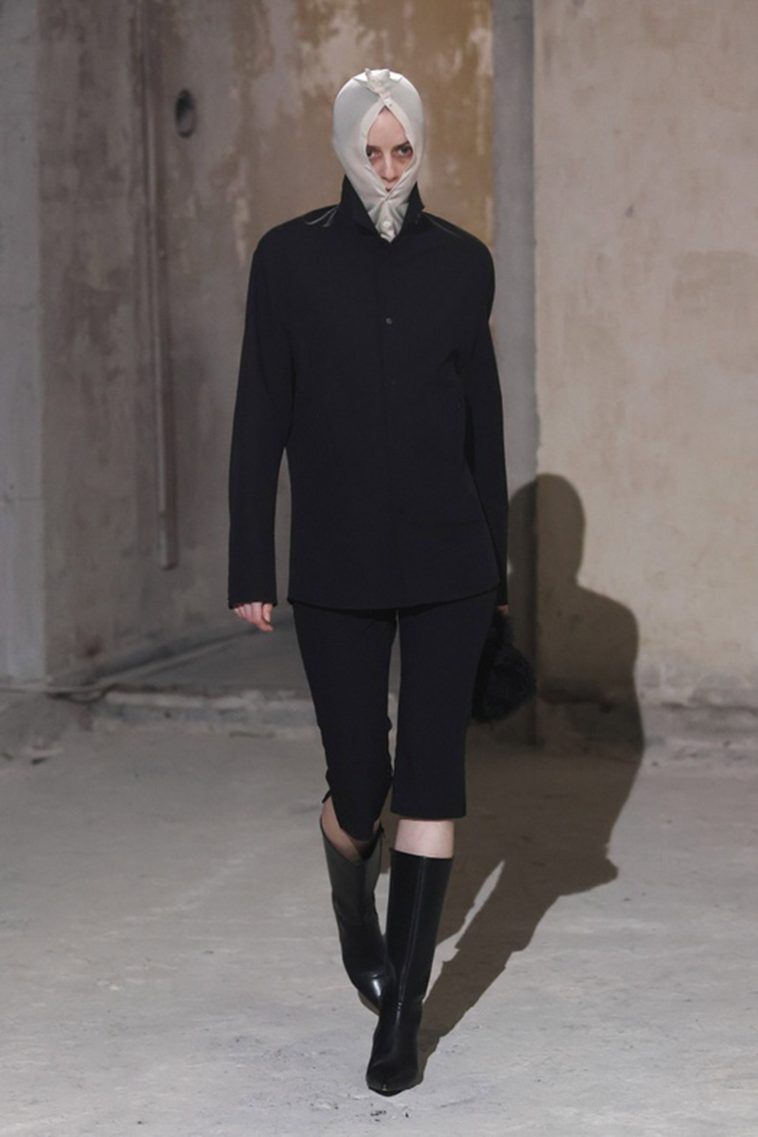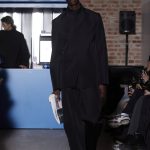The wails of a newborn crying in its first moments of life on the soundtrack was the first clue as to where Jalle Richert and Michele Beil’s heads were at for their fall 2025 collection. Entitled MUTTER (German for mother), Richert Beil’s collection’s notes explained that what we were about to see “explores the depth of emotional and physical exhaustion through the imagery of a tired and overburdened mother caught in a state of exception. Extending beyond gender, the show offers a meditation on the unseen labor that sustains society…MUTTER is a response to the demands of contemporary existence, where the pressure to nurture, produce, and perform is unceasing.”
Richert and Beil are part of a newer generation of German designers whose work is charged with big concepts and meaty statements about gender, politics, culture, and sexuality—I mean, life. It’s one of the strengths of what’s going on here in this city that a deeper critical thinking is often informing its designers’ work. Right now—especially now, in fact—taking that approach feels both bold and correct, and it affords the opportunity to whomever is looking at—or indeed who’s wearing it—to connect with it on their own terms. (For me, talk of motherhood could only lead to reproductive rights, and to America, and we all know how that’s playing out, and it is not good.)
The bigger question, of course, is how intellectual impulses play into the physical world of, well, you know, clothes. If last season’s tongue-in-cheek black leather Gotharama of beach life was awash with sly humor, this time round Richert Beil gave way to a quieter, reflective, troubled even, view of things. (Perhaps unsurprisingly, given the above statement, there was a bit of a dystopian vibe going on; models came out clutching ashen blooms that looked like they were on the point of collapse.) Their motherhood theme was most explicitly addressed with second skin stretch dresses that buttoned all the way up, their hoods pulled up, with one worn by a heavily pregnant model. There was a surer hand with the tailoring, which might mean an impeccably molded double-breasted black overcoat with an extended shoulder line and a squared off sailor collar at the back, or a black coat worked with a distinctly fecund curve to it, and layered over leather, and rather good it was too.
I do have to put my hand up here and say that due to the rather challenging placement of my seat, there was an awful lot of watching this collection in profile—or from behind. But what I did see looked intriguing, particularly the recurring trouser shape, which featured a higher waist, straight legs, and a seam line that arched up and over the butt, and which passed muster in everything from cotton drill to a surprisingly chic latex. (Never easy to do convincingly.) All of this was shown on a cast of their community—that’s another thing about Berlin’s designers, especially Richert Beil; they bring their crowd with them, both literally and metaphorically—and most touchingly, unsurprisingly, with a mother and son who walked side by side, their hands clasped tightly together.





GIPHY App Key not set. Please check settings